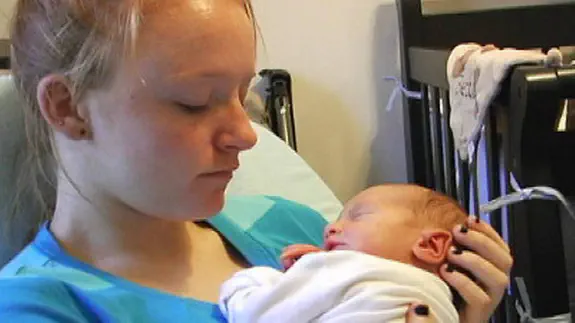Sex and Gender-based Analysis of this topic
Definition
The rate of live births to teenage mothers is defined as the number of live birth deliveries to mothers 19 years of age or younger at the time of delivery, expressed as a proportion of the total number of mothers [1]. A related indicator, age-specific birth rate, is often reported and is defined as the number of births to mothers aged under 19 years per 1,000 females of the same age (in a given place and time) [2]. Teenage pregnancy has been associated with a higher risk for adverse maternal and infant outcomes as well as negative maternal behaviors, such as higher rates of tobacco and other substance abuse during pregnancy [3]. The overall rate of live births to teenage mothers in Canada has declined, particularly among women younger than 18. From 1991 to 2000, the age-specific birth rate for females aged 15-17 fell from 15.4 to 9.7 and the rate for females aged 10-14 fell from 1.9 to 0.9 [4]. The overall rate of all births (live and stillbirth) to teenage mothers in British Columbia has declined from 4.0% in 2002/2003 to 3.6% in 2006/2007 [5] and remains lower than the national average [6].
Sex Issues
A number of adverse maternal and infant outcomes have been associated with births to teenage mothers including low birth weight babies, preeclampsia, anemia, urinary tract infection, very low birth weight, very preterm birth, primary postpartum hemorrhage, neonatal group B streptococcal infection, non-chromosomal congenital anomalies, and maternal mortality [7-8]. Research has not identified a definitive cause of these adverse outcomes, but two general explanatory models exist. The first is “biological immaturity” and the second is competition for nutrients between the mother and the fetus. Related mechanisms that have been proposed include incomplete maternal growth, reproductive immaturity, smaller maternal body size, nutritional deficiencies, socioeconomic and behavioural factors, and maternal emotional stress [9-11].
Gender Issues
As teenage pregnancy is only experienced by females, the societal effects and behaviour changes experienced by teenage mothers must be viewed through a gendered lens. Some challenges that teenage mothers face include increased risks for postpartum depression and physical and sexual abuse during pregnancy [12]. Risks that are unique to this subpopulation include delayed entry into prenatal care and increased use of tobacco, alcohol and other substances [13][14]. In British Columbia for example, the prevalence of smoking for teenage mothers during pregnancy was 34% in 2006/2007 while the rate for non-teenaged mothers was 9.8% [15].
Diversity
The rate of live births to teenage mothers varies widely across the country, within the provinces, and in different population subgroups. The disparity is more pronounced for Aboriginal populations. For example, in Alberta, British Columbia, the Prairies and the Atlantic region, youth pregnancy is estimated to be four times as high as the Canadian average [16]. Regional disparities can also be seen within the provinces. In British Columbia, less than 4% of births are to teenage women, but in Northern Health Authority region, teenage women account for nearly 10% of births [17].
Critique
The rate of live births to teenage mothers is an important gauge of a society’s health due to the adverse impacts on maternal and infant health, as well as the financial impact on the health care system. Efforts are needed to strengthen prenatal education for teenage mothers, as well as education and prevention programs for teenagers with the aim to lower the rate of teenage pregnancy. Further study should address the large disparities that exist geographically and in specific subpopulations and develop culturally-appropriate and research-based best practice guidelines.
